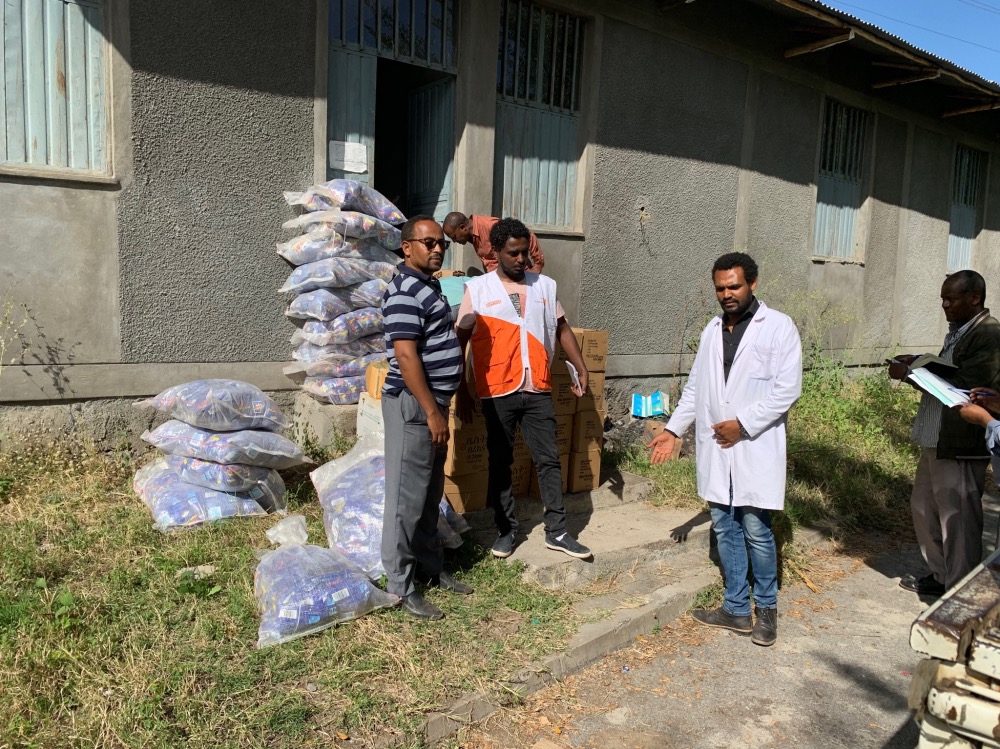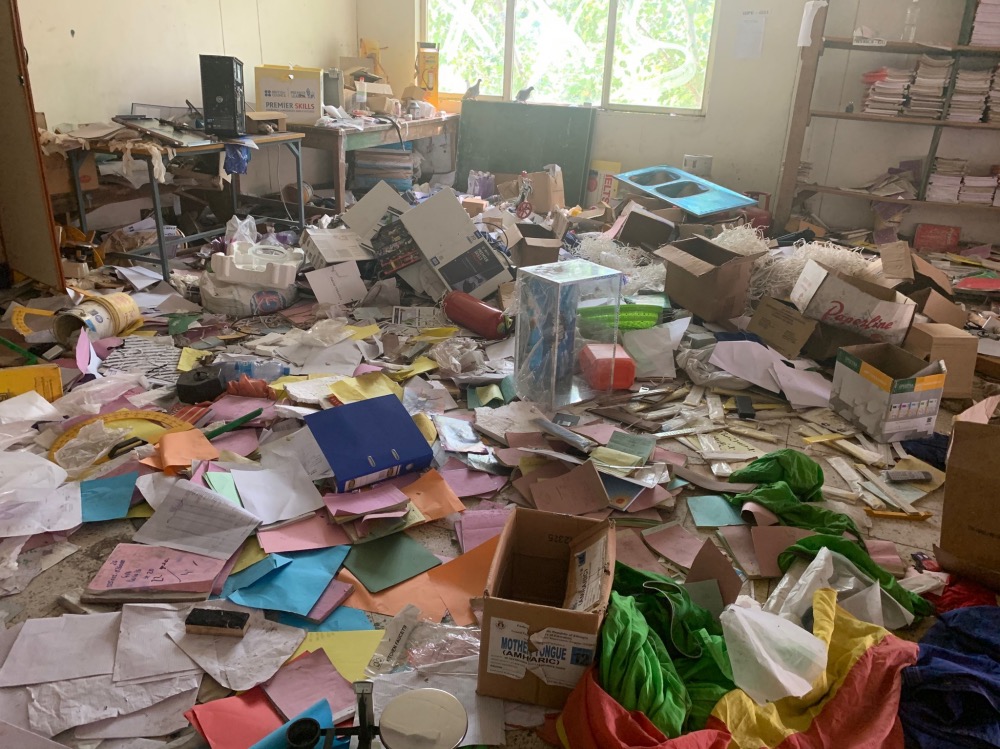World Vision is “deeply concerned” for those caught up in the conflict in Ethiopia’s northern Tigray region, according to a senior representative who is among those responding to the crisis.
Fighting in the region began two months ago after Ethiopian Prime Minister Abiy Ahmed – winner of last year’s Nobel Peace Prize – ordered Ethiopian Government forces into Tigray in response to what he said were attacks on federal army camps by forces aligned to the regional governing party, the Tigray People’s Liberation Front. The death toll remains unknown and Prime Minister Ahmed has rejected what he has described as international “interference”. UN human rights chief Michelle Bachelet recently described the situation in Togray as is “as heartbreaking as it is appalling”.

World Vision delivering supplies to Alamata Hospital in the Tigray region of Ethiopia. PICTURE: World Vision.
In an interview with Sight, Karmen Till, senior director of integrated programs at World Vision Ethiopia, described the situation as “heart-breaking”.
“World Vision remains deeply concerned for the safety and well-being of vulnerable populations, especially children, who are caught up in the conflict,” she said in an emailed response to questions. “We know that UNICEF is estimating 2.3 million children in the Tigray region are in need of humanitarian assistance. It has also been estimated that 850,000 people in Tigray were already dependent on some type of humanitarian assistance before violence escalated last month. Agencies are still trying to determine the exact number of people who are internally displaced, however, the UN’s refugee agency, UNHCR, has recorded more than 50,000 people who have crossed into Sudan since the crisis began.”
Noting there were already “serious gaps” in medical services before the crisis broke out, Till said the crisis – which was impacting “far too many” children – “couldn’t have come at a worse time”.
“Tigray was one of the poorest regions in Ethiopia long before the recent spike in violence,” she said. “There were already hundreds of thousands of people reliant on food aid. This was only exacerbated when desert locusts ravaged parts of the country, further depleting food stocks for many vulnerable families. In the midst of the COVID-19 pandemic, erratic rainfall and localised flooding and drought, the recent wave of insecurity and displacement in Tigray has only deepened the suffering of too many vulnerable people….Many vulnerable families face a long and difficult road to recovery. All while their future is uncertain and unstable. Our focus and concern remains on children and communities, based on humanitarian need, and contributing towards a sustainable and just peace.
Till described what colleagues foiund when visiting a hospital in one of the hardest-hit areas to deliver medical supplies.
“The hospital had run out of medical supplies, is understaffed, and can’t pay the wages of their medical workers, many of whom have fled the area because of the violence,” she said. “Yet there are some courageous people who continue to endure the hardship so they can help others in their community who are too young, old or ill to flee the area. The hospital is overwhelmed with patients with severe malnutrition, malaria and water borne diseases – all of which are preventable. World Vision was able to deliver sanitary medical supplies worth more than $A15,000 to help, but the situation remains dire.”
Till added that the conflict “has been especially tough on frontline workers”.
“I’m also concerned for my colleagues in Tigray who have personally been affected. They are living through this crisis without electricity, water, cash, access to medicine, or even having enough food to feed their children. For several days, they were unable to communicate with loved ones to let them know that they had survived. Their courage to continue with their life-saving work despite such hardship, is truly inspiring.”

A damaged school in Ethiopia’s Tigray region. PICTURE: World Vision.
World Vision has launched a $US10 million response plan to the crisis in Tigray to provide humanitarian assistance to one million people, most of whom are children.
Till said the response includes life-saving assistance such as emergency shelter, water, health, food assistance and child protection.
“We have been one of the first NGOs to respond with assessments and assistance in a few areas that are safe and accessible but there is a long road ahead. We continue to pray for all affected and especially, for peace.”
To give to the appeal, head to www.worldvision.com.au/global-issues/world-emergencies/tigray-crisis-appeal-ethiopia.






